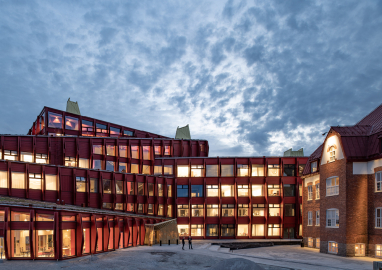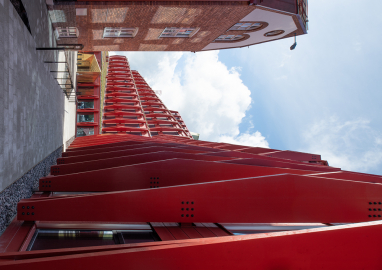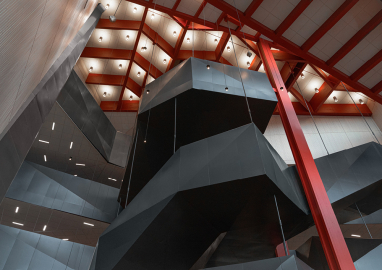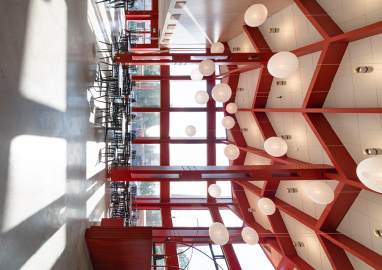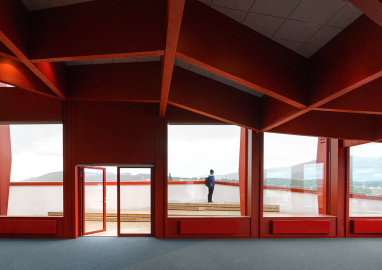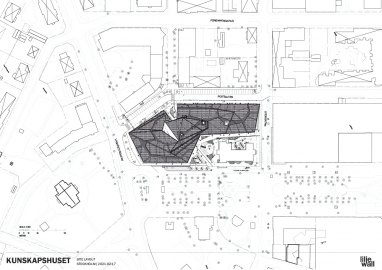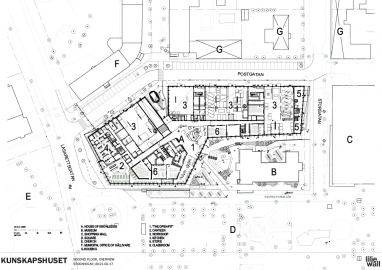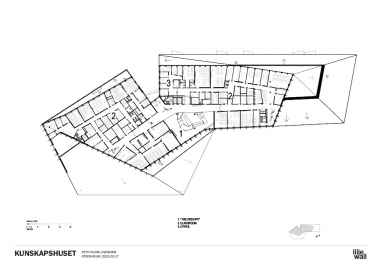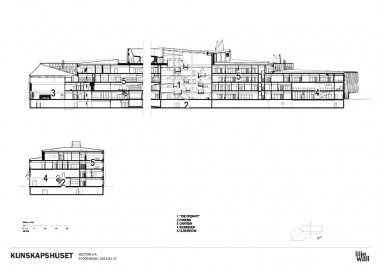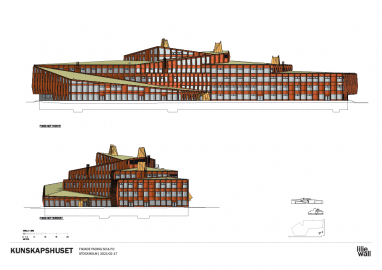Kunskapshuset
House of Knowledge
Gällivare, located north of the Arctic circle, is a city undergoing a unique transformation. Two centres will merge when neighbouring area Malmberget is relocated in to Gällivare as a result of mining development. Through dialogues with citizens and contact with the local business sector and other stakeholders, the municipality has established a vision to build a “world-class Arctic town”. Liljewall, in collaboration with MAF arkitektkontor, has contributed this vision through the creation of Kunskapshuset, which will house the municipality’s upper secondary school and adult education centres.
Using the mine and nature’s contours as inspiration, the six-story-high school has been designed as a landmark that tells the story of the culture and the area. The asymmetrical design breaks down the building’s scale and gives it an enduring and powerful architectural character. Great emphasis has been placed on creating a flexible and attractive educational environment, equipped for future change and development needs. During the project, three selected Sami artists were contacted to each represent interesting aspects of Sami culture. One of the pieces is a large concrete casting with a circular Sami pattern that has been integrated into an over 21-metre-long part of the facades, and the other is a light well in the entrance hall. It was important that the works of art were integrated to become part of the building – not just an addition. Great emphasis has been set on creating a flexible and attractive educational environment equipped for future needs of change and development.
Kunskapshuset has a distinct wooden profile through eye-catching interior and exterior elements in wood. The facade highlights a design tradition and creates a sense of craftsmanship in the town. It is built from glued laminated timber and glass with vertical wooden pillars that sit in front of the inner load bearers. The pillars, which all have different shapes and cuts, have been placed in pairs, creating varying forms. When passers-by walk alongside the school there is an impression of variability and rhythm. From certain angles the school is experienced as solid, while from others it appears to be completely glazed. Much of the fixed furniture and some of the loose furniture has been designed and produced specifically for Kunskapshuset. For example, one specific seating furniture was designed taking inspiration from the Sami pattern that formed the basis for the school's design. The sturdy glued laminated timber benches have great symbolic value, which corresponds to the overall character of the building.

